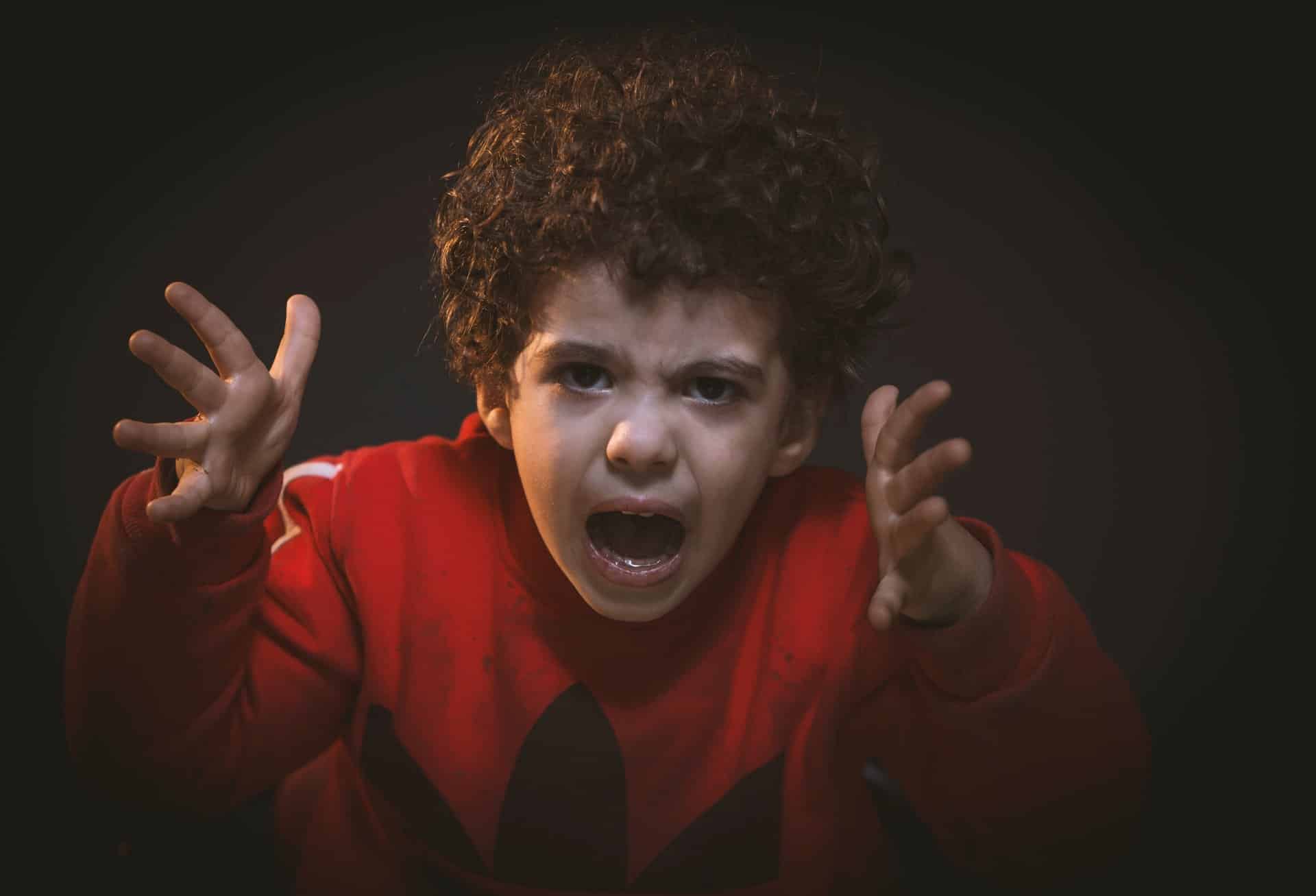Ever experienced your child hitting you, a sibling, or another child? Has your child ever kicked, bit, threw things, broken things, threatened, or been mean?
It makes the heart sink and the blood boil. Where does it come from?
You just want it to stop but don’t know where to start or how to do it.
Woah, it’s hard, but many of us have been there!
Before getting on to what to do in a situation where a child is aggressive, let’s detangle some definitions.
Anger and aggression sometimes are viewed as synonyms, but they’re entirely different things, and it’s important to understand the difference. Anger is a basic emotion every human has.
Anger is a reactive feeling when we feel something isn’t alright. While anger is often viewed as something bad, its purpose is to protect us and keep us safe.
Aggression, on the other hand, is hostile behavior, often when angry, either verbally or physically.
To sum it up, anger is good and can help us feel good while aggression isn’t.
Why is this important?
Well, if a child is angry but not aggressive, it’s a sign that something is wrong, but it’s shown in a healthy way.
When a child is aggressive, we know something is wrong, but we have some more work to do to help the child manage the aggression.
Table of Contents
So how do we handle an aggressive child?
1. Remove the child from the situation
When a child is aggressive, it’s important to remove the child so that no one gets hurt but also to change the environment, which has a calming effect.
2. Find a calming down strategy that works
This can be breathing calmly together, push and pull, where you push your both hands together as hard as you can and then let go and shake them.
Repeat until the child has calmed down, or just hugging the child if he/she is ready for it. Try different things and find what works best for the child. This page gives more examples.
3. Be clear of what’s acceptable and what’s not acceptable
Be crystal clear of what’s acceptable and when you’ve crossed that line, but this should be told calmly and assertively.
4. Talk it through
Talk about the situation. What actually happened? Why did it happen? It’s important the child gets an opportunity to tell his/her perspective and not just be told what happened and what not to do.
If this is the case, the child will eventually learn it’s useless to talk about anything because you’re more interested in talking than listening.
By talking about emotions and difficult situations, the child learns to verbally express him/herself instead, which is crucial to handle situations non-aggressively in the future.
5. Show empathy and compassion
Aggressive children often end up in a negative spiral where others become suspicious and negative due to previous aggressive behavior.
This often stirs up emotions of not being trusted, not being enough, and being unwanted.
These feelings often trigger even more anger and aggression, which is not seldom met with angry, disappointed adults telling them what they’re not allowed to do.
6. Empathize emotions
Aggressive children have difficulties regulating their emotions. The first step in regulating emotions is to become more self-aware by naming emotions and talking about them.
Ask how he/she felt during this, how he/she thinks the others felt, and whether he/she’d like to feel this way.
7. Show the child what to do instead
We, adults, are great at telling children what not to do but not as good at actually telling and showing them how to do something.
Aggressive children need extra support on how actually to act and behave differently. This can be challenging, though, but a useful resource is this course.
What not to do with aggressive children
1. Be angry with them
Becoming angry ourselves doesn’t solve anything. It escalates the situation; it makes it harder to stay sensitive and responsive.
So it’s of utmost importance that you stay calm and collected, being a role model of how to behave, this article shows you how.
2. Be judgemental
Never stop being curious and ask what happened.
Aggressive children often get the label of troublesome or problematic children and are assumed to have done something wrong indifferently if we know what happened.
Even if you know what happened, talk about it and be curious about the child’s view of what happened. This way, you can understand the child’s triggers.
3. Assume they’re bad kids
No child wakes up in the morning, thinking he or she will be mean and hurt others. Children want to be happy and have no intention to be mean or aggressive.
Anger is a reactive emotion, and aggressiveness is a way to handle the anger.
This is a way of behaving when they haven’t learned to behave in a healthier way. Assuming they’re bad doesn’t give them an opportunity to improve.
With the mindset of children wanting to do good but unable to handle difficult emotions effectively with the result of becoming aggressive, it’s easier to be understanding and help the child.
This way, we become teachers and supporters instead of judges and police.
- How Primary Care Doctors Are Your First Line of Defense - December 23, 2024
- Live-In Caregiver Jobs: Providing Support, Building Bonds - December 19, 2024
- Caring for Your Porcelain Veneers: Tips for a Lasting Smile - November 12, 2024
